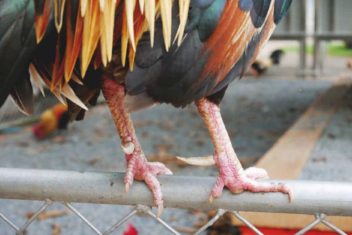You aren’t alone if you’ve found yourself unsuccessfully chasing your chickens, hoping to safely grab ahold of them for one reason or another.
Maybe they need some medical treatment, or maybe you want to round them up and send them off to their coop for the day, whatever the reason, wouldn’t it be nice to have an easy way to catching chickens when you want?
Chickens are surprisingly evasive and quick. Catching them is no easy task, but if you put a little time and effort into training them, securing a chicken doesn’t have to be as difficult as you may think.
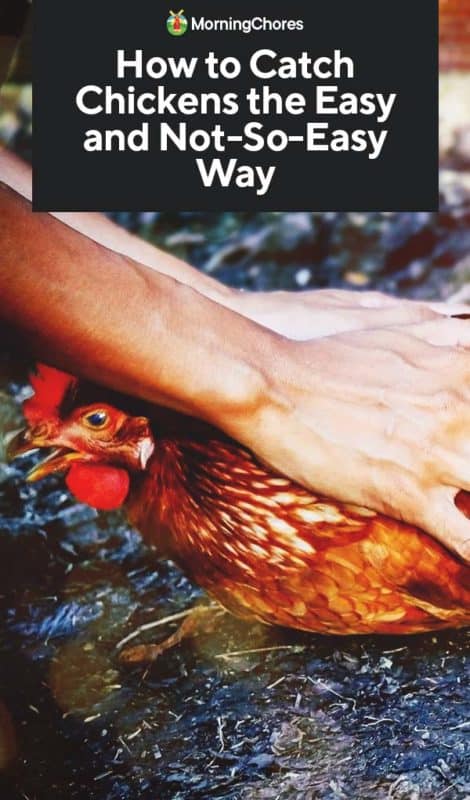
Train Your Chickens to Recall
Recalling is a method that game bird breeders use to keep their birds coming back to their coop every night at the same time. While this won’t put your chicken in your arms at a moment’s notice, it does put them in a predictable place at the end of the day.
In case you haven’t noticed, chickens enjoy roosting in the same place every night. As long as they feel safe, and are off the ground a bit, they will return night after night.
Of all the ways you can contain your chickens, teaching them where their coop is, is the easiest, most reliable way to get hold of your birds for vetting.
How to train your chickens to return to their coop:
- Keep your flock inside their coop for about 2 weeks, do not let them out.
- After the second week, let them out every morning at the same time.
- Your chickens won’t travel too far the first few days out of the coop, and when twilight hits, they will return to their roost in the coop.
- Close the coop up after the last chicken enters.
- Wait for your chickens to settle in, and you can easily pick up whichever chicken you need.
You see, chickens become extremely sleepy and lethargic at night. They don’t fight as much when approached, and some even say they are in a trance-like state. So as long as it’s not an emergency, and you can wait to catch your chicken, nighttime is the best time.
Recalling your chickens is easy to do, but they may choose new roosts outside the coop from time to time. In that case, start from step 1 and retrain the flock.
Teach Your Chickens to Come for Treats
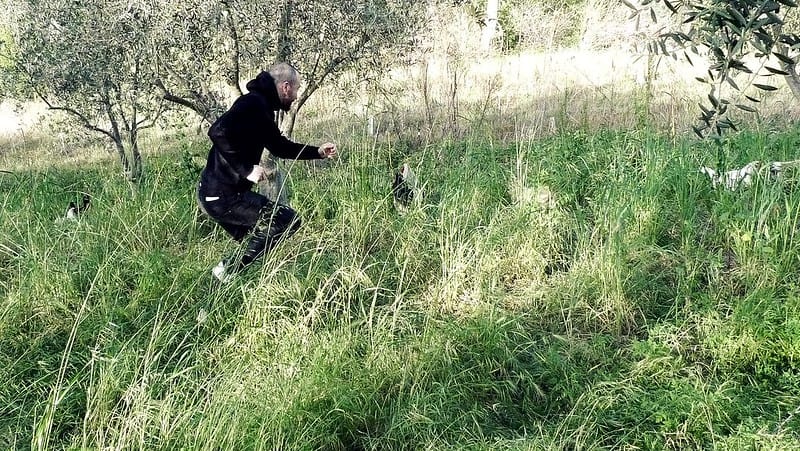
You can use food to “lure’ your chickens with the addition of your voice, a whistle, or some other kind of signal. If you always feed your chickens treats when you make a certain sound, it becomes quite similar to that of clicker training.
It’s no different than using a grain bucket to catch an escaped horse or cow. Chickens, while they aren’t all brains, do recognize faces and sounds.
You can start with something yummy like mealworms or watermelon, but eventually, you can use their general meals to prompt your chickens to run to you.
Your chickens will learn to associate the sound you’ve chosen with goodies… and their fluffy butts will come running.
The best part about this tactic is that you can call them at any time of the day. The key here is to always feed them their treats in the enclosure you intend to keep them in, so you can corner and catch a single bird if needed.
Catching Chickens If Time Is of the Essence
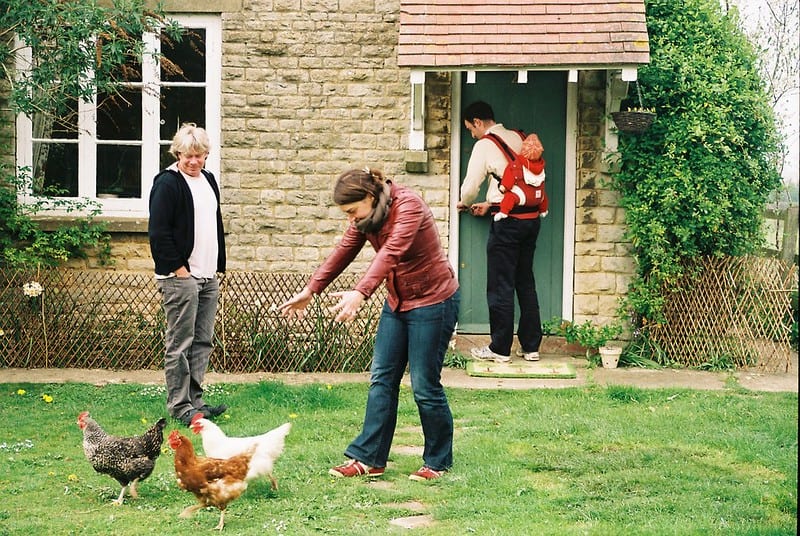
If you haven’t trained your chickens to come to the coop on cue, you may be forced to play catch-me-if-you-can with your hens. For example, if you need to treat a chicken for bumblefoot, you don’t want to wait around for the infection to spread… you need to secure your chicken as soon as possible for treatment.
So, here’s a few ways to catch your chickens…and I didn’t say they were easy!
1. Using a Poultry Pole
Ah the poultry pole, a simple crook (think Bo Peep) that you clip around your chicken’s legs to “grab” them when they are at a distance. Simply extend the pole, loop it around the foot, and drag your chook to you.
Be careful when using a poultry pole because your chickens will probably panic, and may injure themselves. So be gentle.
2. Nets (big nets)
Nets are dangerous, and should only be used as a last resort if needed. I would never recommend using a net to capture a chicken unless it is harming other animals or birds and it must be contained immediately.
The netting often becomes a tangles mess for spurs and wings to become stuck in. So do your best to try to catch your chicken in a more humane way before resorting to nets.
Note: If you use a net, opt for the biggest one you can find to prevent injuries.
3. Cornering
If you are able to confine your chickens to a coop or enclosed space, you can always turn back to old faithful…and run your butt off trying to catch your chickens with your hands.
The trick is to corner the chicken you are trying to catch, focus only on that hen, and then quickly put pressure on its back, as a rooster would during mating. Don’t use too much force, but just enough to help the hens knees buckle so you can carefully pick her up.
Holding Your Chicken
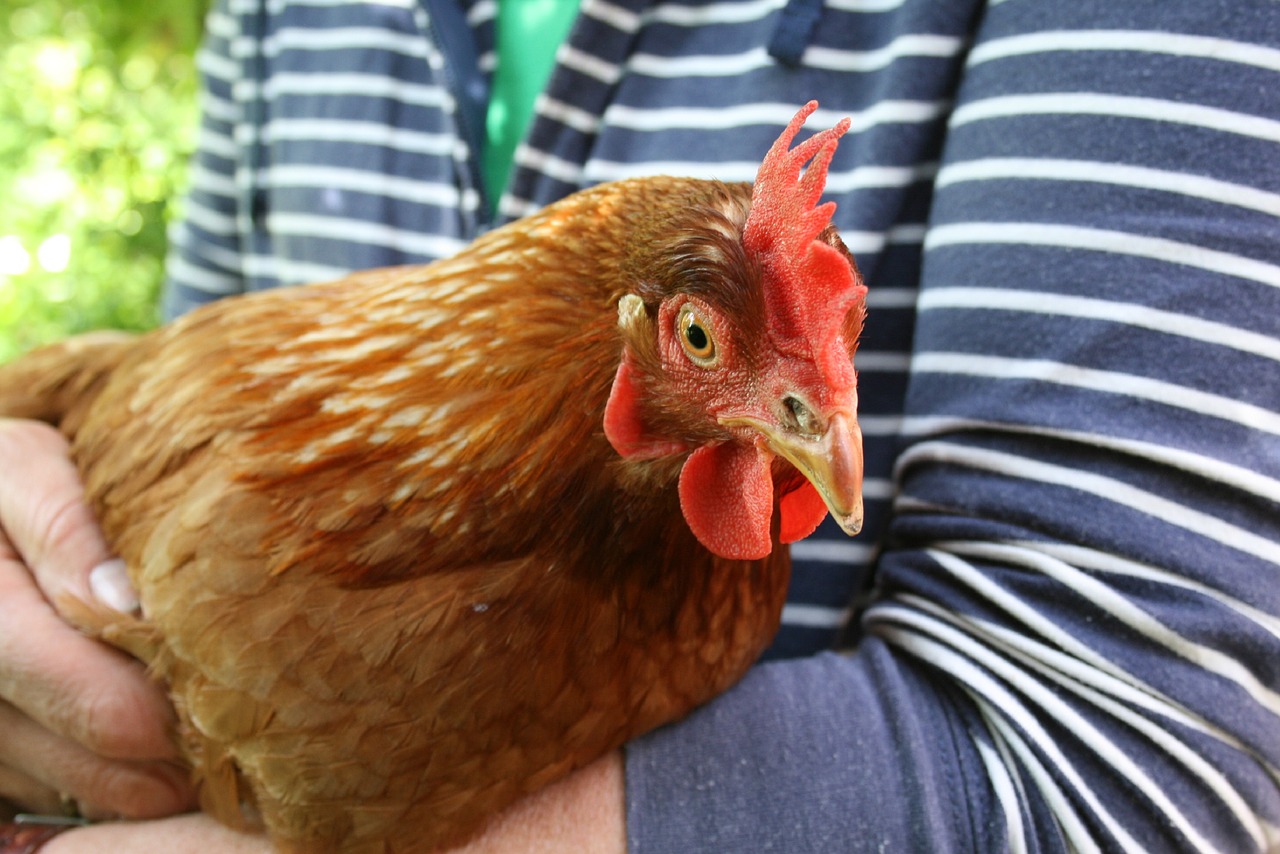
Whenever you pick up your chickens, do so with care and caution. Most chickens calm down once they are in your arms, but some will struggle for a bit.
When picking up a chicken, press her wings to her body and cradle her in your arms, using your hands and arms to keep her wings gently in place. If you are holding rude rooster or hen, and have concerns about being pecked, keep the chicken at a distance from your face. Hold it lower on your torso, but close to your body.
Keep your hands at a safe distance from angry beaks.
Calming a Chicken
Chickens are prey animals, and they don’t like to be handled. However, amazingly, some chickens can be calmed down with petting, and soothing talk.
If that doesn’t work, you can use a towel and cover your chickens head, preventing any light from entering, but also being careful not to restrict their ability to breathe. The darkness calms chickens down enough to treat injuries or inspect for illness.
If you are a serious chicken lover, you will need to catch and handle your chickens at some point. Knowing how to make it easier on yourself will make it less painful when the day comes… plus your neighbors won’t be rolling on the ground laughing at you as you helplessly chase your chooks.







